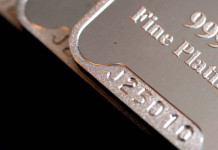
ASSET manager, Ninety One struck a positive note for JSE-listed platinum group metal (PGM) stocks in a recent report, saying they were under-bought on the basis that the introduction of battery electric vehicles (BEVs) did not immediately spell the end of the internal combustion engine (ICE).
Vehicles powered by ICEs need PGMs in their autocatalysts whereas BEVs don’t. However, Ninety One’s portfolio managers, Unathi Loos, and Daniel Sacks think adoption of BEVs will be a gradual process. In addition, science is finding ways to accommodate PGMs in other ways; specifically, in hydrogen-powered fuel cells which need PGMs to work.
It all adds up to the prolonged relevance of PGMs which, coupled with the short-term inability of PGM miners to meet demand expansion, asks questions of the current ‘end of the cycle’ discount that Ninety One believes is being applied to PGM stocks.
“A re-rating of PGM shares is due, as metal prices remain ‘stronger for longer’, in our view,” said Loos and Sacks. PGM companies’ balance sheets and cash flow statements support increased dividends, and even buy-backs, they said.
“The demand outlook beyond 2030 may rise significant debate, but in the context of flat supply growth over that period the odds seem evenly balanced,” they said.
So what of the future? A report by BloombergNEF, the news agency’s research arm, implies BEV adoption may be a hard nut to crack, especially if net-zero emissions are to be achieved sooner rather than later. So tough, in fact, that it calls for more proactive public policy to further BEV sales, the research company asserts.
Colin McKerracher, head of the advanced transport team at BloombergNEF, said that in a net-zero emission scenario, BEV passenger cars would have to hit almost 60% of sales in their segment globally by 2030, not 34% as they are estimated to do in BloombergNEF’s economic transition scenario. That means selling 55 million EVs in that year as opposed to 32 million units.
“2030 is only two model-refresh cycles away for automakers, so policy certainty will be needed very soon to make investments for a higher rate of penetration possible,” says McKerracher in the research note.
Government policy can code for better BEV adoption, but in the end, it is the choice of the consumer. Currently, consumers critically question the range of cars powered by batteries, the time spent charging them, and the cyclability of the battery.
GET THE BALANCE RIGHT
Whilst hydrogen technology using fuel cells catalysed by PGMs remain an evolving science, Mike Jones, CEO of Platinum Group Metals, a Toronto-listed PGM miner, says his company is on to its own technology that may help with the adoption of BEVs. And it involves PGMs.
Lion Battery Technologies, a joint venture between PTM and Anglo American Platinum, the Anglo American-owned firm, is working on technology that introduces PGMs into the standard lithium-ion battery that thrifts out some of the other minerals such as nickel, manganese, aluminium, and cobalt.
This makes the batteries lighter and improves the power-to-weight ratio which is the Philosopher’s Stone all chemists are trying to solve for BEVs: how to get batteries to last longer than two years – about 700 cycles (defined as completely discharged to 100% full) without the battery – and the car weighing a ton.
Jones says Lion Batteries will be able to achieve cyclability of 1,000 to 1,200 times versus 700 times currently by adding PGMs to the standard BEV-type battery. At current PGM prices that sounds like an expensive business, but set against the rewards, PGMs become a value proposition, says Jones.
“The assumption was previously that you can’t put PGMs in a battery because they’re too expensive,” he says. “That’s the intuitive answer. But what is the value of a battery that has a 40% to 100% performance increase?”










